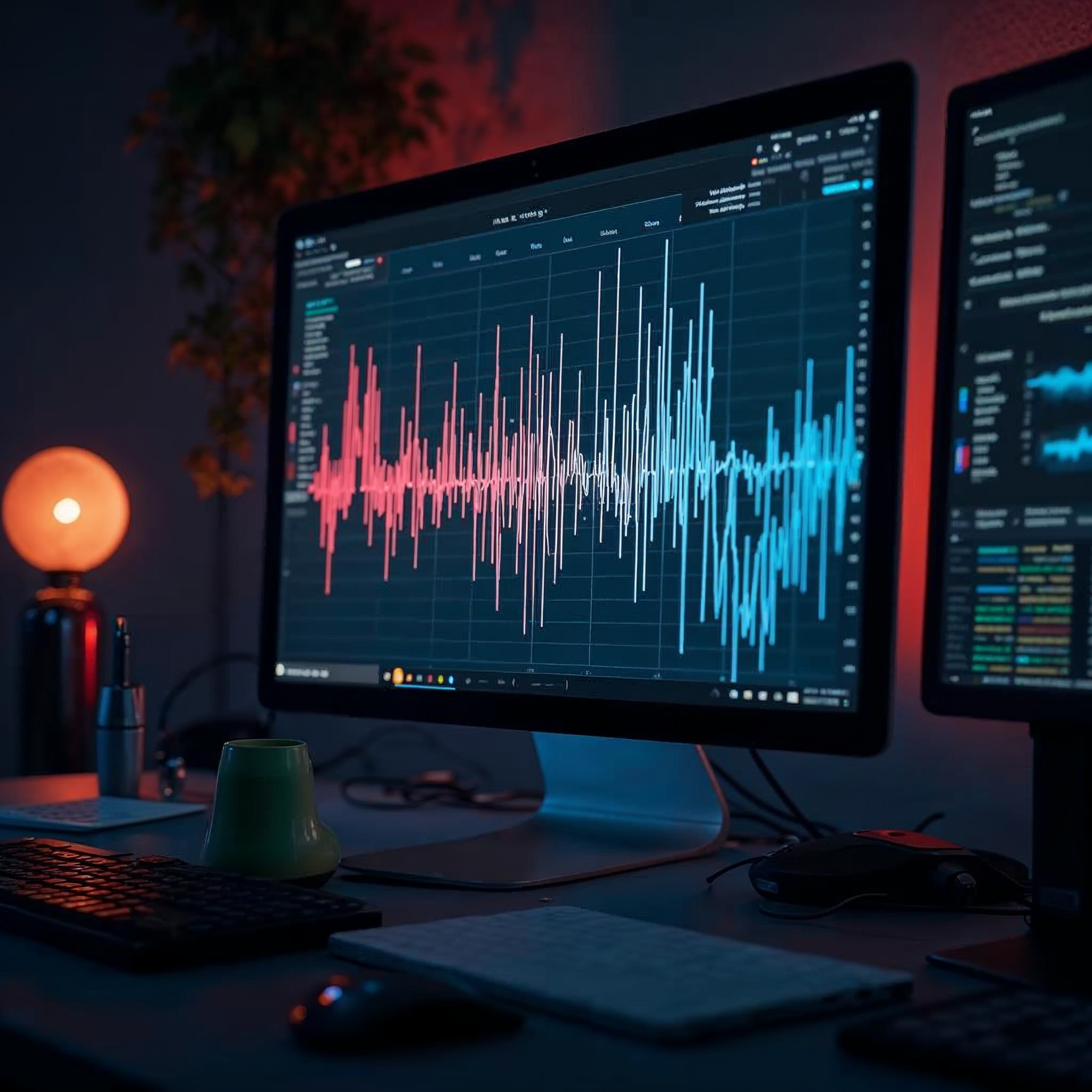
Podcast Production Tips: From Recording to Final Polish
Share
You’ve nailed your podcast content but your audio still sounds flat and lifeless. That’s where smart podcast production steps in—transforming raw recordings into crisp, engaging shows that grab attention. From capturing clear sound to fine-tuning every detail with mixing and mastering, these podcast tips will show you how to polish your episodes like a pro. Ready to bring your audio quality up a notch? Let’s get started!
Capturing Pristine Audio

Achieving pristine audio quality is the foundation of any successful podcast. Selecting the right equipment and creating an ideal recording environment are crucial steps for any podcaster aiming for excellence. Let's explore these components to ensure your podcast sounds professional and engaging.
Selecting the Right Equipment
Choosing the right equipment can make a significant difference in your podcast's audio quality. Start by investing in a good-quality microphone, which is the cornerstone of any recording setup. Understand the type of microphone that suits your needs: dynamic microphones are durable and handle loud environments well, while condenser microphones capture more detail and are ideal for quiet settings.
-
Microphones: Consider your recording environment to choose between dynamic and condenser microphones.
-
Headphones: Use closed-back headphones for monitoring to avoid sound leakage.
-
Audio Interfaces: An interface is essential for connecting your microphone to your computer, ensuring clear sound capture.
Remember, you don't need the most expensive gear to produce great audio. It's about finding the right balance between quality and budget.
Creating an Ideal Recording Environment
Your recording environment plays a pivotal role in capturing pristine audio. Select a quiet space to minimize background noise. Soundproofing can be as simple as using thick curtains or blankets to absorb echo.
Consider a dedicated room for recording if possible. This allows you to control the acoustics better. If a separate room isn't an option, choose a space with soft furnishings that can help dampen sound.
It's also important to be mindful of your microphone placement. Position it at a suitable distance to avoid plosives and reduce background noise. Always test your setup before recording to ensure everything is working as it should.
Enhancing Your Sound Design

Once you've captured quality audio, the next step is to enhance your sound design. This involves refining your recordings through mixing and mastering, and adding creative effects that give your podcast a unique sonic identity.
The Art of Mixing and Mastering
Mixing and mastering are critical stages in podcast production that elevate audio quality. Mixing involves adjusting levels and balancing audio tracks to create a cohesive sound. Use equalization to adjust frequencies, ensuring clarity and presence. Compression can help maintain consistent volume levels.
Mastering is the final polish, adding finishing touches to ensure your podcast sounds great on all platforms. This stage involves normalizing audio levels and adding a final equalization pass.
Adding Creative Effects
Creative effects can add depth and character to your podcast. Reverb and echo can create a sense of space, while sound effects can enhance storytelling. Use these tools sparingly to maintain clarity.
Experiment with different effects to find what complements your content. For instance, a slight echo can add drama to a narrative podcast, while a clean, dry sound may be better for interviews.
It's also important to maintain a consistent sound across episodes to establish your podcast's identity. Keep track of your settings and apply them uniformly. This consistency helps in building a recognizable brand.
Final Polish and Distribution

You've put in the work to capture and enhance your audio. The final stage involves quality control and distribution to reach your audience effectively. This ensures your podcast is heard in the best possible light.
Quality Control Steps
Before releasing your podcast, conduct a thorough quality check. Listen through headphones and speakers to catch any discrepancies. Pay attention to audio balance and clarity.
-
Check for Distortions: Ensure there are no unwanted distortions or noise.
-
Verify Volume Levels: Consistency in volume levels across episodes is key.
-
Export Settings: Confirm that export settings are optimized for podcast platforms.
Having another set of ears can be beneficial, so consider having a colleague or friend review your work. This step ensures your podcast is polished and professional.
Reaching Your Audience
Once your podcast is polished, it's time to distribute it. Selecting the right platforms is crucial for reaching your target audience. Hosting services can help distribute your podcast to popular platforms like Spotify, Apple Podcasts, and Google Podcasts.
To maximize reach, craft a compelling description and use keywords to improve discoverability. Engage with listeners through social media and encourage reviews to build a community around your podcast.
Promotion is key. Collaborate with other podcasters or influencers to expand your audience. Use analytics to monitor performance and adapt your strategy based on listener feedback.
Ready to take your podcast to the next level? Contact Free From CTRL for expert audio production services and learn how we can help you create a memorable sonic identity. Receive a free initial consultation to discuss your project needs and elevate your sound. Let us be your partner in podcast production. 🎤
